With thorns or thornless, red or green, sour or sweet – you can find all kinds of gooseberry varieties in European gardens. This berry boasts a unique flavour and a healthy composition, making it popular in cooking, medicine, and even cosmetics. Gooseberries are low-maintenance, but sometimes, despite abundant foliage, the bush produces no fruit. Let’s explore why this happens and how to fix it.
Table of contents
Why Gooseberries Fail to Fruit: Common Causes
There are many reasons why gooseberry bushes may not bear fruit. If the problem isn’t diagnosed and addressed in time, the plant may die. That’s why gardeners regularly inspect their bushes and monitor their health.
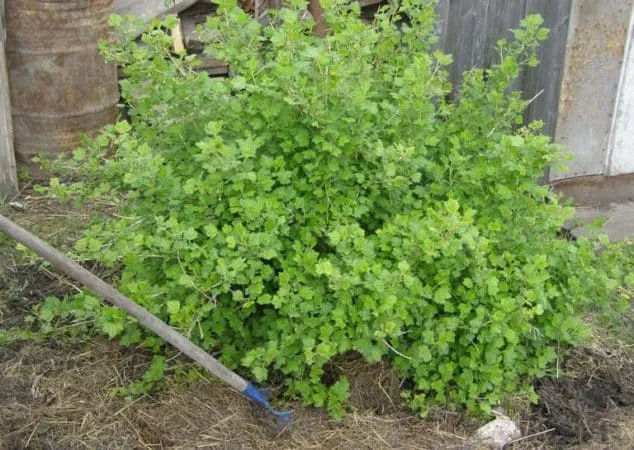
Poor Maintenance
Although gooseberries are hardy, they still require regular care. In spring, gardening efforts focus on awakening the shrub and stimulating sap flow. In summer, attention shifts to supporting fruit development, while autumn care prepares the plant for winter.
Often, gardeners neglect these tasks, leading to poor yields or no fruit at all.
Common gardening mistakes include:
- Watering with cold water from open sources. It may contain harmful microorganisms that cause diseases. Prolonged drought can also reduce fruiting.
- Lack of fertilisation. For abundant fruiting, gooseberries need balanced nutrition – including organic and mineral fertilisers. Spring and early summer are critical for micronutrient supply.
- Failure to prune. Without annual pruning, bushes become overgrown, increasing disease and pest risks.
- Ignoring weeding and soil aeration. These steps improve oxygen exchange, preventing root rot and infections.
Signs of poor care include stunted growth, dry leaves, and overall weakness.
Aging Bush
A bush is considered old if it has fruited for over 7-10 years. Some bushes go unpruned for a decade or more, resulting in long, tangled branches. If age is the issue, gardeners recommend thinning the bush by removing non-fruiting branches to rejuvenate it.
Start by cutting off broken, weak, or pest-damaged branches. Keep only 3-5 strong annual shoots.
Rejuvenation pruning is best done in early spring, after sap flow begins. Avoid removing all old growth at once – spread the process over 2-3 years. With proper care, the bush will eventually produce fruit again.
To boost fruiting, pinch back the tips of annual shoots in late July or early August.
Incorrect Planting
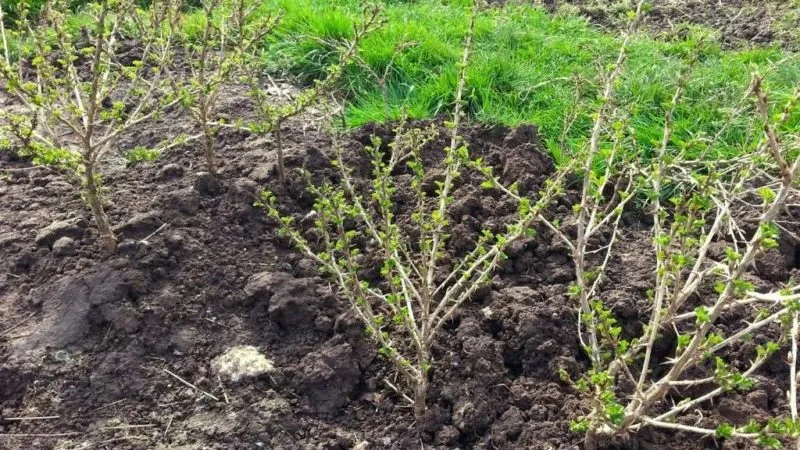
Gooseberries need plenty of sunlight, so plant them in a bright location. Otherwise, growth slows, leaves turn grey-green, and fruiting suffers.
Avoid planting near waterlogged areas or high groundwater levels. Excess moisture leads to small berries and fungal diseases.
Choose light, nutrient-rich soil with neutral acidity. Heavy clay soils should be amended with organic matter (compost, peat) and wood ash.
Note: Good neighbours for gooseberries include pears, plums, and apples, as their root systems don’t compete. Avoid planting near blackcurrants, raspberries, or strawberries.
Plant Diseases
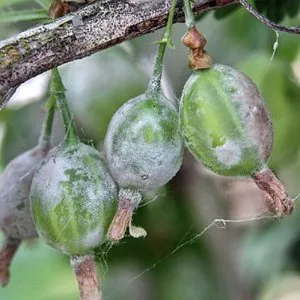
Diseases often arise from poor care, overcrowding, or lack of prevention. Untreated infections can destroy entire bushes.
The main threat is powdery mildew, a fungus that thrives in shade and damp soil. White spots appear on leaves, later turning brown, and berries may also be affected.
Another issue is anthracnose – small glossy brown spots on leaves. Without treatment, leaves dry and fall, halting fruiting. Causes include potassium/phosphorus deficiency, improper watering, or bad companion plants.
Rust is another culprit. Orange-brown blisters form on leaves, spreading until foliage drops. Young or weak bushes are most vulnerable.
How to Restore Fruit Production
Once the cause is identified, take action with these effective solutions.
Watering and Feeding
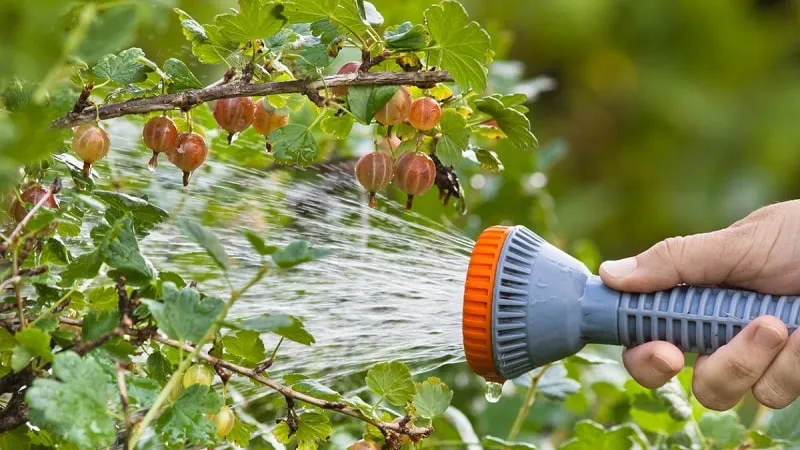
If drought is the issue, water deeply – about 4 buckets per mature bush, 2-3 for young ones. Water reaches 40-50 cm deep, where roots are located.
Water early morning or evening. Loosen soil first, then mulch with sawdust or leaves to retain moisture.
Note: Weekly overhead spraying (drenching) helps, especially in hot climates.
Fertilise three times per season. In April, use organic solutions (compost, wood ash). During flowering, apply potassium sulphate or double superphosphate. In August, spray with a garlic-soap mix (150g garlic + 10L water, steeped 3 days, strained, + 50g soap, diluted 1:10).
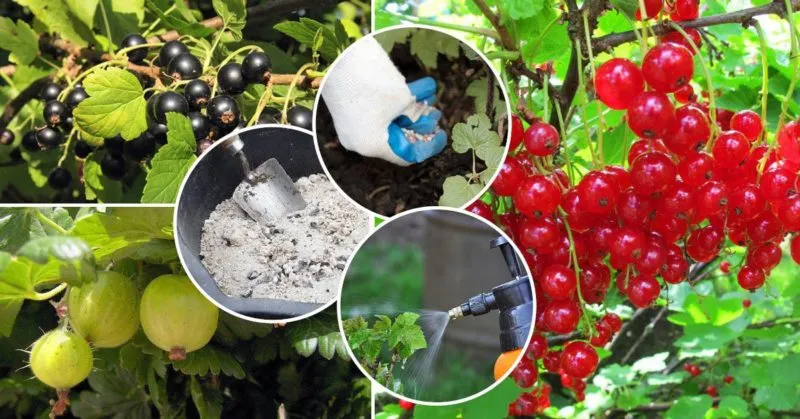
Pruning and Rejuvenation
Overgrown bushes need thinning and shaping. Cut back half of old branches and remove root suckers. Use sharp shears, disinfect cuts, and wear gloves for protection.
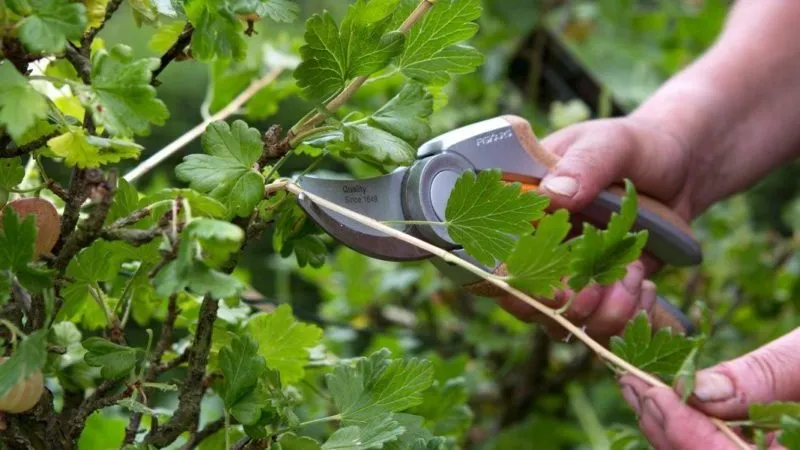
From year 4 onward, remove dead or weak branches – they drain nutrients without fruiting.
Annual pruning ensures a tidy shape, better yields, and disease resistance.
Winter Protection
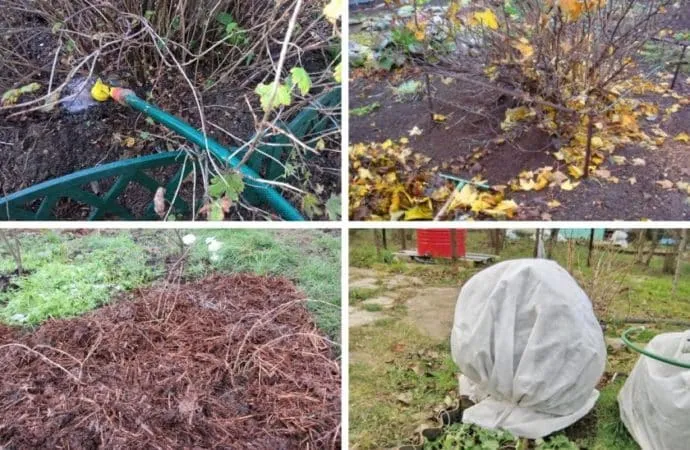
Unprotected bushes may freeze. Create a soil mound around the base, cleared of weeds and treated with potassium permanganate. Mulch with 10 cm of peat or compost.
Snow makes excellent insulation. If snow is scarce, use breathable fabric like agrofibre. Remove covers in spring after snow melts.
Note: In emergencies, plastic film can shield against frost – but remove it daily to prevent overheating.
Disease and Pest Control
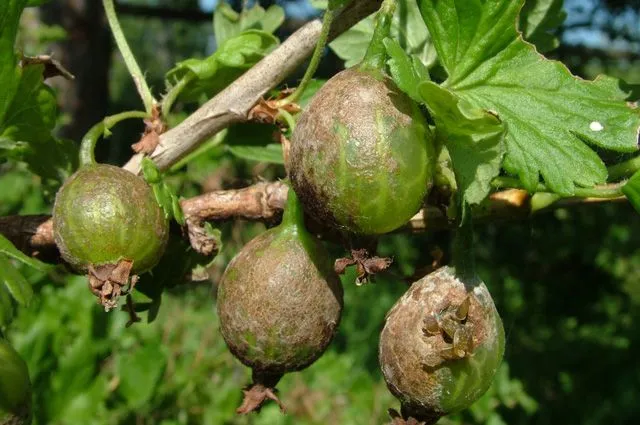
Wood ash spray (1kg ash + 3L water) prevents and treats mildew, aphids, and anthracnose. Apply at dawn. Monthly ash-watering strengthens roots.
For spider mites or rust, use EU-approved fungicides like "Teldor", "Cuprofix", or "Envidor". Follow safety guidelines (gloves, goggles). Baking soda spray (5g/L water) also deters fungi.
Conclusion
Diagnose fruiting issues by checking the bush: orange blisters indicate rust, white powder signals mildew, and dry growth suggests water/nutrient lack.
Early detection is key. To ensure healthy yields, choose the right planting spot, maintain proper care, and apply preventive measures.







